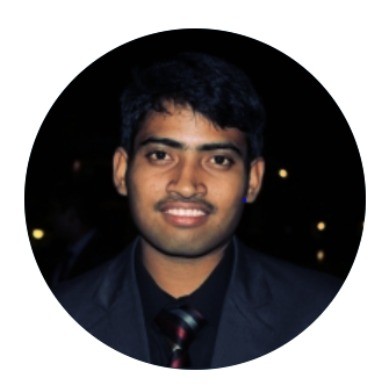APAC Cell Counting Market Research Report – Segmented By Product, Consumables, End User & Country (India, China, Japan, South Korea, Australia, New Zealand, Thailand, Malaysia, Vietnam, Philippines, Indonesia, Singapore & Rest of APAC) - Size, Share, Trends, Growth, Forecast | 2024 to 2029
APAC Cell Counting Market Size (2023 to 2028)
The size of the cell counting market in the Asia-Pacific region was worth USD 0.19 billion in 2023. The market size is expected to grow at a CAGR of 7.2% during the forecast period and be worth USD 0.27 billion by 2028.
The APAC cell counting market is expected to grow significantly during the forecast period. The growing demand for advanced healthcare facilities in emerging economies like China and the collaboration among market players for the development of innovative products are factors that are significantly contributing to the growth of the market. In addition, increased government funding for scientific research has fostered the rapid development of stem cell research in China. For example, the Chinese government and the UK government adopted a program related to stem cell research called the UK-China Stem Cell Partnership Initiative.
Factors that increase the cell counting market focus on cell counting in diagnosing and treating terminal diseases such as cancer, as well as a wide range of cell counting applications. In addition, the increase in healthcare expenses and the use of new cell-counting technologies have led to market growth. The cell counting market in the Asia Pacific region is expected to showcase promising growth due to the growing focus on regenerative medicine & a significant number of biotechnology and biopharmaceutical companies in the APAC countries.
However, the high prices of advanced cell counting systems and the lack of awareness of researchers to use advanced cell counting techniques are limiting the growth of this market to some extent. The hIn addition, high instruments cost and a lack of good healthcare infrastructure in developing countries are challenging the market growth rate.
This research report on the APAC cell counting market has been segmented and sub-segmented into the following categories.
By Product:
- Instruments
- Cell Counters
- Hematology Analysers
- Spectrophotometer
- Flow Cytometer
- Hemocytometer
- Others
By Consumables:
- Microplates
- Reagent
- Assay Kits
By End User:
- Pharmaceutical & Biotechnology Industries
- Hospitals & Diagnostic Laboratories
- Research & Academic Institutes
By Country:
- India
- China
- Japan
- South Korea
- Australia
- New Zealand
- Thailand
- Malaysia
- Vietnam
- Philippines
- Indonesia
- Singapore
- Rest of APAC
During the forecast period, the APAC region is anticipated to hold a considerable share of the worldwide market and grow at the highest CAGR. The increasing number of diagnostic procedures for various chronic diseases and the availability of cost-effective diagnostic tests drive the market's growth. In addition, less complex regulations for drug development in the Asian region have boosted the market's growth.
Japan accounted for the largest market share in the APAC cell counting market in 2021. The market growth is attributed to the development of medical devices and research and development activities. In addition, the major companies are exporting medical devices by targeting developing markets to capture reasonable market share. In addition, according to the National Institute of Health, China has established around 110 stem cell banks; there are currently 11 stem cell drugs under approval, and in 2018, more than 410 stem cell clinical trials were registered in the country. Therefore, these initiatives towards stem cell therapy offer a vast opportunity for the cell counting industry.
India is considered the fastest-growing market for medical device manufacturers. In India, the cell counting market is growing due to the availability of low-cost raw materials, better access to labor, and an increasing number of hospitals and healthcare facilities. In addition, India is one of the major destinations for medical tourism, especially orthopedic surgeries, which further influences the market's growth. During the forecast period, there is a steady growth of this market in Australia and the Republic of Korea.
KEY MARKET PLAYERS:
Companies playing a leading role in the APAC cell counting market are Thermo Fisher Scientific, Inc., Danaher Corporation, Agilent Technologies, Bio-Rad Laboratories, Merck Millipore, Inc., GE Healthcare, Becton, Dickinson and Company, and PerkinElmer, Inc.
Frequently Asked Questions
What is the current size of the APAC cell counting market?
The APAC cell counting market size was worth USD 190 million in 2023.
What are the major companies operating in the APAC cell counting market?
Thermo Fisher Scientific, Danaher Corporation, Becton, Dickinson and Company, Merck KGaA, Bio-Rad Laboratories, Inc., and Agilent Technologies, Inc. are some of the promising players in APAC cell counting market.
What are some of the challenges faced by the APAC cell counting market?
The high cost of cell counting devices and the lack of skilled professionals who can operate and interpret the results from these devices are some of the major challenges to the growth of the APAC cell counting market.
Related Reports
Access the study in MULTIPLE FORMATS
Purchase options starting from $ 2000
Didn’t find what you’re looking for?
TALK TO OUR ANALYST TEAM
Need something within your budget?
NO WORRIES! WE GOT YOU COVERED!
Call us on: +1 888 702 9696 (U.S Toll Free)
Write to us: [email protected]
